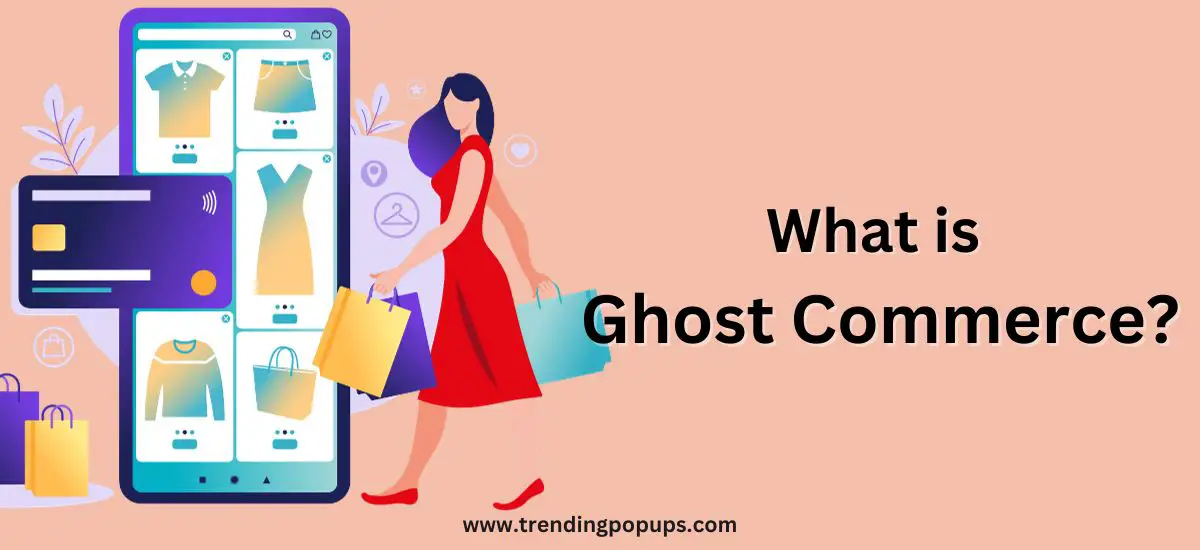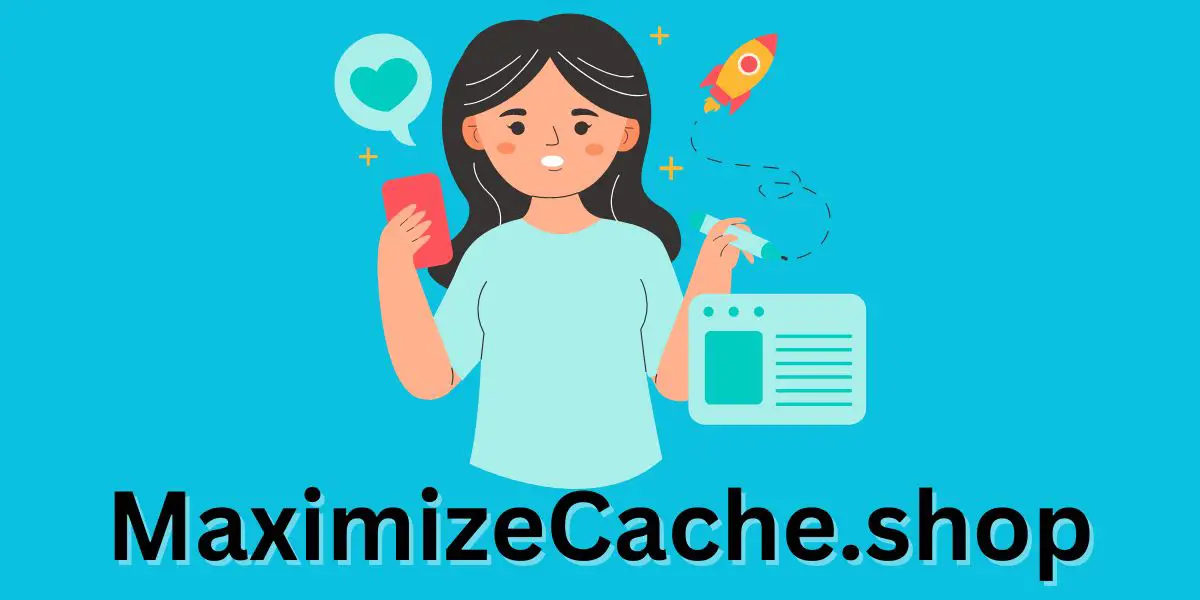In the ever-evolving landscape of e-commerce, new terms and trends constantly emerge, leaving us intrigued and sometimes a bit perplexed. One such buzzword that has been making waves recently is “Ghost Commerce.” But What is Ghost Commerce, and how does it fit into the grand scheme of online business? Let’s embark on a journey to demystify this intriguing concept.
What is Ghost Commerce?
Ghost Commerce is not as enigmatic as it may sound. In essence, it refers to a unique online retail model where brands operate without a traditional e-commerce website. Instead of maintaining a visible storefront, these businesses rely on social media platforms, marketplaces, and other third-party channels to connect with their audience and make sales.
The Rise of Ghost Commerce
The traditional approach to e-commerce involves establishing a dedicated website to showcase products, manage transactions, and build a brand presence. However, the digital landscape is evolving, and so are consumer behaviors. Ghost Commerce has gained traction as a response to the changing ways people discover and purchase products online.
Social media platforms like Instagram, Facebook, and Pinterest have become powerful tools for brands to showcase their products directly to consumers. Ghost Commerce leverages these platforms, allowing businesses to bypass the need for a traditional website and connect with customers where they already spend a significant amount of time.
Advantages of Ghost Commerce
- Cost-Effective: Setting up and maintaining a website can be a significant expense for businesses, especially startups. Ghost Commerce eliminates the need for costly website development and maintenance, making it a budget-friendly option.
- Quick Setup: Ghost Commerce allows businesses to get up and running swiftly. Without the need for a complex website development process, brands can focus on creating compelling content and engaging with their audience almost immediately.
- Social Proof and Engagement: Operating on social media platforms provides an opportunity for brands to build social proof and engage directly with their audience. Customer reviews, comments, and user-generated content can all contribute to a brand’s credibility and influence purchasing decisions.
- Adaptability: In a rapidly changing digital landscape, businesses need to be agile. Ghost Commerce offers flexibility, allowing brands to adapt quickly to emerging trends and shifting consumer preferences.
Challenges of Ghost Commerce
While Ghost Commerce presents several advantages, it is not without its challenges. Some of the notable hurdles include:
- Limited Control: Relying on third-party platforms means relinquishing some control over the user experience. Brands may have limited customization options and must adhere to the policies of the platform they are using.
- Dependency on External Factors: Ghost Commerce is inherently tied to the algorithms and policies of social media platforms and marketplaces. Any changes in these external factors can impact a brand’s visibility and reach.
- Risk of Competition: With the ease of entry into the Ghost Commerce space, competition can be fierce. Brands need to develop unique strategies to stand out and capture the attention of their target audience.
Ghost Commerce for Techno Labs
In the midst of a tech revolution and a thriving entrepreneurial landscape, the concept of ghost commerce could be the secret sauce propelling Techno Labs into uncharted success. Picture this: a realm where innovation meets opportunity, where the spectral allure of ghost commerce intertwines seamlessly with the cutting-edge prowess of Techno Labs. Here’s a glimpse into the spectral symphony of possibilities:
- Crafting Tailored E-commerce Marvels: Imagine Techno Labs as the architect of bespoke digital marketplaces, weaving custom eCommerce solutions that dance to the unique rhythms of local businesses. From startups bursting with ambition to seasoned enterprises, each entity finds its digital haven, meticulously designed and curated by Techno Labs.
- Unveiling the Ethereal Frontiers: Techno Labs emerges as a virtuoso, not just in coding but in orchestrating ethereal front-end experiences. Augmented and virtual realities blend seamlessly into the shopping tapestry, creating immersive escapades for customers. Picture the integration of e-commerce seamlessly into mobile apps, offering users a spectral journey through a world where convenience meets enchantment.
- Streamlining the Backstage Spectacle: Beyond the visible splendor, Techno Labs takes on the role of a backstage sorcerer, optimizing the often-overlooked back-end operations. Local businesses, now armed with streamlined online store operations, revel in newfound efficiency. Techno Labs becomes the unseen maestro, conducting the symphony of operations that transforms businesses into seamless, digital spectacles.
In this spectral realm of ghost commerce, Techno Labs is not merely a spectator but a visionary, navigating the complexities and challenges with a keen eye for innovation. The ghosts of commerce past become the stepping stones to a future where Techno Labs reigns supreme, transforming challenges into opportunities and mundane transactions into spectral, digital adventures.
Conclusion
In the ever-shifting landscape of e-commerce, Ghost Commerce stands out as an innovative approach that challenges traditional norms. By leveraging the power of social media and third-party platforms, brands can connect with consumers in new and dynamic ways. While it comes with its set of challenges, the cost-effectiveness, quick setup, and adaptability of Ghost Commerce make it a compelling option for businesses looking to make their mark in the digital realm.
As the digital world continues to evolve, it’s essential for businesses to stay informed about emerging trends like Ghost Commerce. Whether you’re a seasoned entrepreneur or just dipping your toes into the e-commerce waters, understanding the nuances of Ghost Commerce can open up new avenues for growth and success in the online marketplace.
FAQs
Q. Can you make money from Ghost commerce?
Ans. Absolutely, making money from Ghost Commerce is not only possible but has proven to be a successful strategy for many businesses. Ghost Commerce, relying on social media platforms and marketplaces instead of a traditional website, offers unique advantages that can contribute to revenue generation. Here’s how businesses can make money through Ghost Commerce:
1. Social Media Sales:
- Direct Sales: Social media platforms like Instagram and Facebook enable businesses to showcase and sell products directly through their profiles. By integrating shopping features, customers can seamlessly transition from product discovery to purchase without leaving the platform.
- Shoppable Posts: Brands can create shoppable posts that allow users to click on products featured in an image or video and proceed to make a purchase. This streamlined process enhances the user experience and increases the likelihood of impulse buys.
- Marketplace Presence:
-
-
- Third-Party Platforms: Ghost Commerce often involves selling products on established marketplaces such as Amazon, Etsy, or eBay. These platforms provide built-in audiences, reducing the need for extensive marketing efforts. Businesses can reach a wider customer base and benefit from the trust associated with these well-known marketplaces.
-
2. Influencer Collaborations:
- Partnerships: Collaborating with influencers who align with your brand can amplify your reach and drive sales. Influencers can showcase your products to their followers, providing authentic recommendations and testimonials that resonate with potential customers.
3. Content Monetization:
- Content Creation: Ghost Commerce places a strong emphasis on content creation. Businesses can monetize content through sponsored posts, affiliate marketing, or by creating and selling valuable digital content such as e-books, guides, or online courses.
4. Subscription Models:
- Exclusive Access: Some Ghost Commerce businesses leverage subscription models, offering exclusive content or early access to products for subscribers. This recurring revenue stream can contribute to a stable and predictable income.
5. Limited Edition Drops:
- Urgency and Scarcity: Creating a sense of urgency and scarcity by releasing limited edition products or running flash sales can drive sales and create a buzz around your brand. This strategy encourages customers to make quick purchasing decisions.
6. Customer Engagement and Loyalty:
- Repeat Business: Building a community around your brand through social media can foster customer loyalty. Engaging with your audience, responding to comments, and creating a sense of belonging can lead to repeat business as satisfied customers return for more.
6. Affiliate Marketing:
- Partnerships with Affiliates: Businesses can engage in affiliate marketing by partnering with individuals or other businesses to promote their products. In return, affiliates earn a commission for each sale generated through their unique affiliate links.
While Ghost Commerce presents a unique approach to online business, success still hinges on fundamental principles such as understanding your target audience, providing value, and adapting to market trends. By strategically leveraging the advantages of Ghost Commerce, businesses can not only make money but also thrive in the ever-evolving digital marketplace.
Q. Is Ghost good for e-Commerce?
Ans. Ghost Commerce, as an alternative approach to traditional e-commerce, can be beneficial for certain businesses depending on their goals, resources, and target audience. Here are some factors to consider when evaluating whether Ghost Commerce is a good fit for your e-commerce strategy:
Advantages of Ghost Commerce for E-commerce:
1. Cost-Effectiveness:
- Lower Entry Costs: Ghost Commerce eliminates the need for a dedicated e-commerce website, which can significantly reduce initial setup and maintenance costs. This is particularly advantageous for small businesses or startups with limited budgets.
2. Quick Setup and Flexibility:
- Agility: Ghost Commerce allows businesses to establish a presence on social media platforms quickly. This agility is beneficial for businesses looking to adapt swiftly to changing market trends and consumer preferences.
3. Social Media Engagement:
- Direct Customer Interaction: Operating on social media platforms enables direct engagement with the target audience. This can lead to stronger customer relationships, brand loyalty, and valuable feedback.
4. Marketplace Opportunities:
- Leveraging Established Platforms: Selling products on established marketplaces like Amazon, Etsy, or eBay can provide immediate access to a broad audience without the need for extensive marketing efforts.
5. Influencer Marketing:
- Amplified Reach: Ghost Commerce aligns well with influencer marketing strategies. Collaborating with influencers can help businesses tap into new audiences and build credibility through authentic endorsements.
6. Content Monetization:
- Diversified Revenue Streams: Ghost Commerce places a strong emphasis on content creation. Businesses can monetize content through various channels, such as sponsored posts, affiliate marketing, and the sale of digital products.
Considerations and Challenges:
1. Limited Control:
- User Experience: Relying on third-party platforms means businesses have limited control over the user experience. Brands must adhere to the policies and design constraints of the platforms they use.
2. Dependency on External Factors:
- Algorithm Changes: Success in Ghost Commerce is influenced by the algorithms and policies of social media platforms. Changes in algorithms or policies can impact visibility and reach.
3. Competition and Differentiation:
- Standing Out: With the ease of entry into Ghost Commerce, businesses face increased competition. Developing unique strategies to stand out and differentiate from competitors is crucial.
4. Data Ownership:
- Limited Data Control: Businesses may have limited access to customer data compared to having a dedicated website. This can impact marketing strategies and customer relationship management.
5. Scalability:
- Scaling Challenges: While Ghost Commerce is suitable for some businesses, others may find it challenging to scale without a dedicated e-commerce infrastructure.
Ghost Commerce can be a viable and cost-effective strategy, especially for businesses looking for quick entry into the e-commerce space. However, it’s essential to carefully consider the trade-offs and challenges associated with this approach. Businesses should evaluate their specific needs, target audience, and long-term goals to determine whether Ghost Commerce aligns with their overall e-commerce strategy. Ultimately, the success of Ghost Commerce lies in understanding its dynamics and leveraging its advantages to create a unique and compelling online presence.
Q. What is an example of Ghost commerce?
Ans. An excellent example of Ghost Commerce is the business model adopted by some fashion brands that primarily operate on social media platforms without maintaining a traditional e-commerce website. One notable example is the brand “Fashion Nova.”
Example: Fashion Nova
Business Model:
Fashion Nova is a popular fast-fashion brand that has gained widespread recognition for its Ghost Commerce approach. Instead of relying on a standalone website, Fashion Nova has strategically leveraged social media platforms, especially Instagram, to build its brand and drive sales.
Key Features of Fashion Nova’s Ghost Commerce Strategy:
1. Instagram as the Storefront:
- Fashion Nova uses its Instagram profile as a virtual storefront. The brand regularly posts high-quality images of its trendy clothing and accessories, creating a visually appealing feed that attracts and engages its target audience.
2. Shoppable Instagram Posts:
- The brand takes advantage of Instagram’s shopping features, allowing users to directly shop for featured products. Shoppable posts enable a seamless transition from product discovery to purchase without redirecting users to an external website.
3. Influencer Collaborations:
- Fashion Nova collaborates extensively with influencers and celebrities, who showcase the brand’s products to their followers. This influencer marketing strategy has played a significant role in expanding Fashion Nova’s reach and building credibility.
4. Limited-Time Offers and Flash Sales:
- The brand often employs limited-time offers and flash sales, creating a sense of urgency and encouraging followers to make quick purchasing decisions. This strategy taps into the impulse-buying behavior of the target audience.
5. Engagement and Community Building:
- Fashion Nova actively engages with its audience through comments, direct messages, and user-generated content. This approach fosters a sense of community around the brand and encourages customer loyalty.
6. Data-Driven Decision-Making:
- Fashion Nova leverages data analytics from social media platforms to gain insights into customer preferences, behaviors, and trends. This data-driven approach helps the brand make informed decisions regarding product offerings and marketing strategies.
Fashion Nova’s success exemplifies how Ghost Commerce, centered around social media platforms, can be a powerful strategy for certain businesses, especially those in the fashion and lifestyle industries. By embracing a digital-first approach and capitalizing on the strengths of platforms like Instagram, Fashion Nova has been able to build a strong brand presence, engage directly with its audience, and drive sales without the need for a traditional e-commerce website. This example showcases the adaptability and effectiveness of Ghost Commerce in the modern digital landscape.



